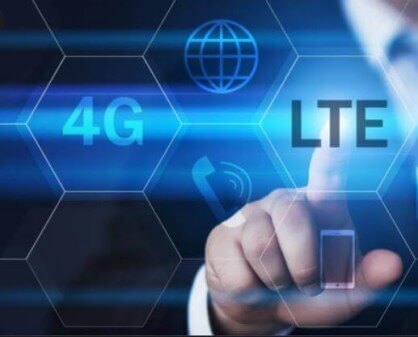What Is 4G?
Before getting into the lucid details of what is the difference between 4G and LTE, we will try to first understand what these individual terms mean and how they are interlinked. Let us first try to understand the name “4G”. The “G” in 4G stands for ‘Generation’ of wireless technology. With each new generation, you get significantly faster speeds but it becomes incompatible with the previous generation. So you will never come across a 3G phone working on a 4G network. Unsurprisingly, 4G is the next step up from 3G. It means that you can watch videos on your phone without waiting for an age for them to buffer. In theory, 4G can reach a speed of up to 80 megabits per second. This means you can download one 5 minute song from i-tunes per second! If you don’t have 4G, your phone is likely to be using the latest version of 3G. This is a lot better than when 3G first came out but it is still a bit of a slouch compared to 4G. 42 megabits per second is not bad but it is more likely to be 1-2 megabits per second in the real world which is okay if you are only interested in email and catching up on the news. There has been a lot of talk about 4G in the past few years, along with the release of new mobile networks and devices. 4G is the latest mobile phone technology and like 3G it can be used for downloading data and accessing the internet but the difference is that it is a lot faster than 3G. This technology has been available to the world for quite a few years now. But still many of us are trying to process its functions and how it works. All this technology began with 1G when we used to have bulky analog phones that only allowed voice calls. Then came along 2G, which allowed digital mobile communication such as SMS and text messages along with voice calling. Then came 3G, this is when the internet went mobile. With a simple mobile device, you could send emails, read the newspapers, check your favorite social media, basic videos, and so on. But now there is 4G, extremely fast mobile internet. How fast? You can surf at the speed of your fixed line at home while you are on the move. 4G offers a speed of about 28 megabits per second for uploads. The 4G networks also offer faster network reaction times due to lower latency and much more stable connections even in low coverage areas. The speed offered by 4G could be influenced by many factors such as your distance from the antenna, whether you are inside or outside a building, the number of users in your area, the network resources available, your type of device, and the application you are using. Under normal conditions, you will still reach an average speed of around 20 megabits per second for downloads and 12 megabits per second for uploads.
What Is 4G LTE?
Now, let us talk about LTE. Long Term Evolution, everyone is talking about it, operators are embracing it but what does it mean in the real world? This is the simple truth about LTE, it is 4G technology and a major step forward for the communications industry. It is extremely fast, efficient, and intelligent, which will make for an extreme communications experience. And that is great for delivering what people want profitably. It is a safe bet that people are looking for more bandwidth, better quality, and services tuned to their profile. We know from experience that end-users are only prepared to pay a certain amount, the problem is that providing all of the extra stuff means that operator costs go up. LTE solves this problem through its very low cost per megabit. Also, lots of happy customers using great new services in itself drives demand. But meeting this demand is just the start of this story. Communication so far has only been about people speaking to other people who live far away. The future of communication will be about all kinds of things speaking to each other through the internet, what the experts call “The internet of things”. Every coffee maker, toaster, car engine, and goods pallet could be equipped with a low-cost LTE chip that will connect it to an ever-growing network, and according to even conservative forecasts, there will be billions, even trillions of such connections each generating a tiny amount of data. You can do the math, that is a lot of data. So the LTE business case takes on a whole new dimension. It has been called the key part of the largest organic growth opportunity in the history of business. Behind LTE there will be a broad ecosystem, many players will be involved including handset suppliers and software developers, infrastructure vendors to chipset manufacturers. Plus, with LTE devices in billions of places on the internet of things, there will be plenty of opportunities for a whole range of new players to get in on the act. On top of all this, the switchover will be fairly straightforward, there is already a base station, the LTE compatible Flexi-base station from the Nokia Siemens Networks that work for both 3G and 4G, which means that the upgrade to LTE can be as simple as a remote software upgrade.
4G Vs. LTE.
So, LTE or Long Term Evolution isn’t as much a technology as it is a path followed to achieve 4G speeds. Most of the time your phone displays the 4G symbol in the upper right corner, it doesn’t mean it. When the ITU-OUR set the speeds for 4G, they were a bit unreachable, in response, the regulating body decided that LTE could be labeled as 4G if it could provide a substantial improvement over the 3G technology. And hence immediately, networks began advertising their connections as 4G LTE.

